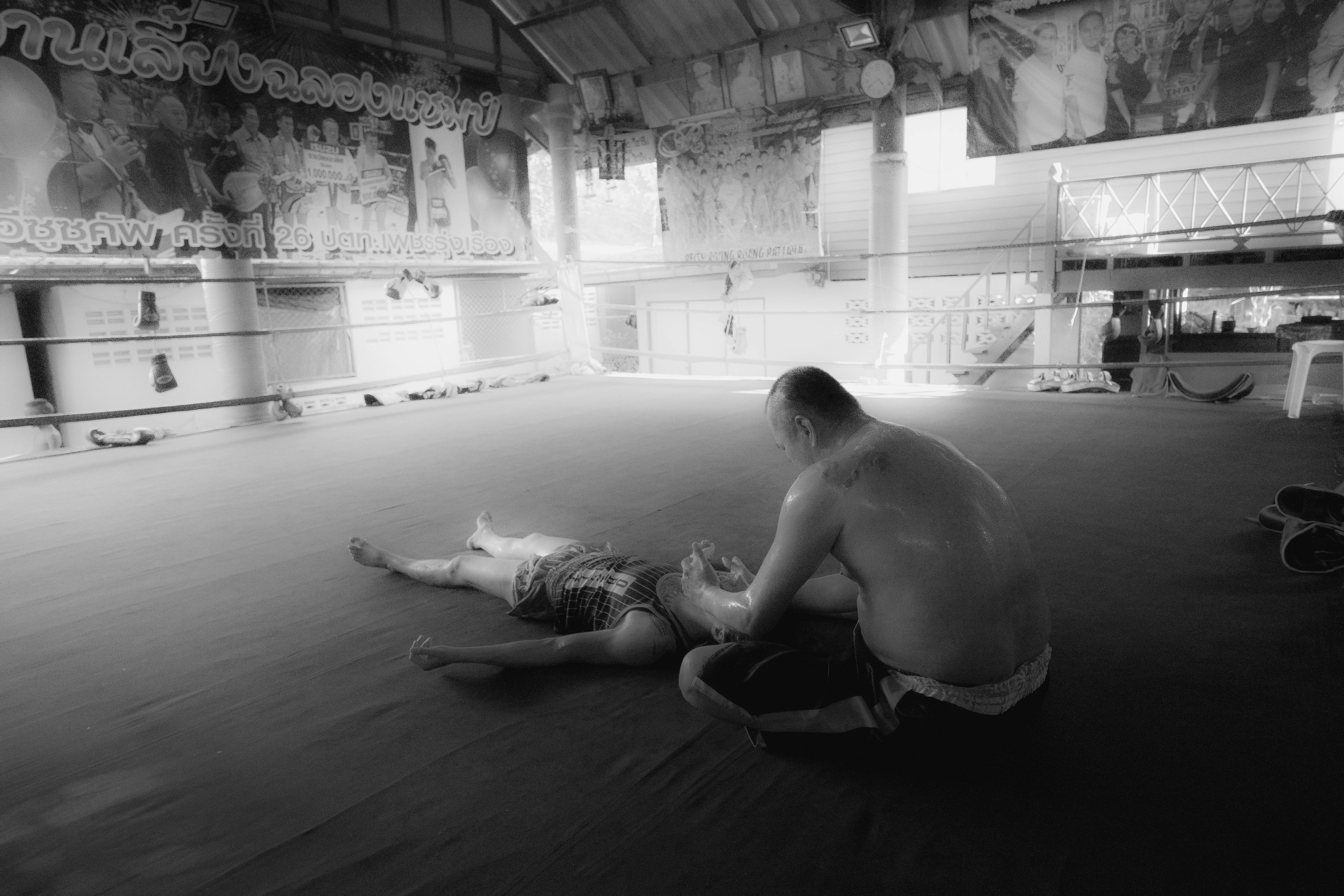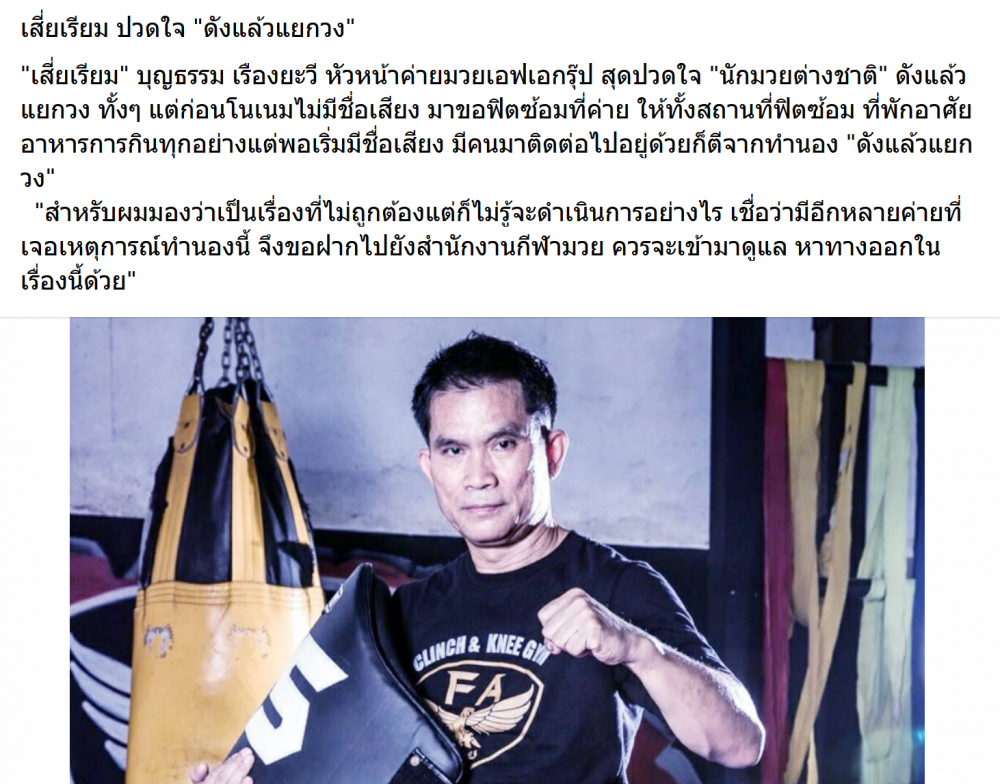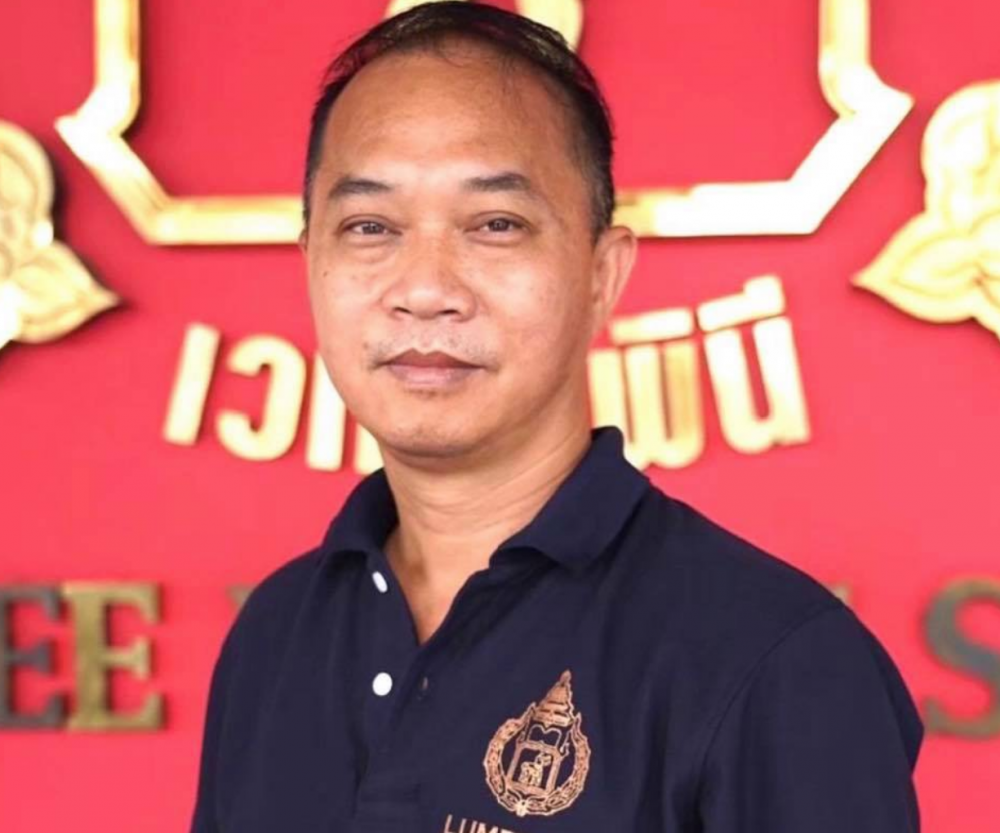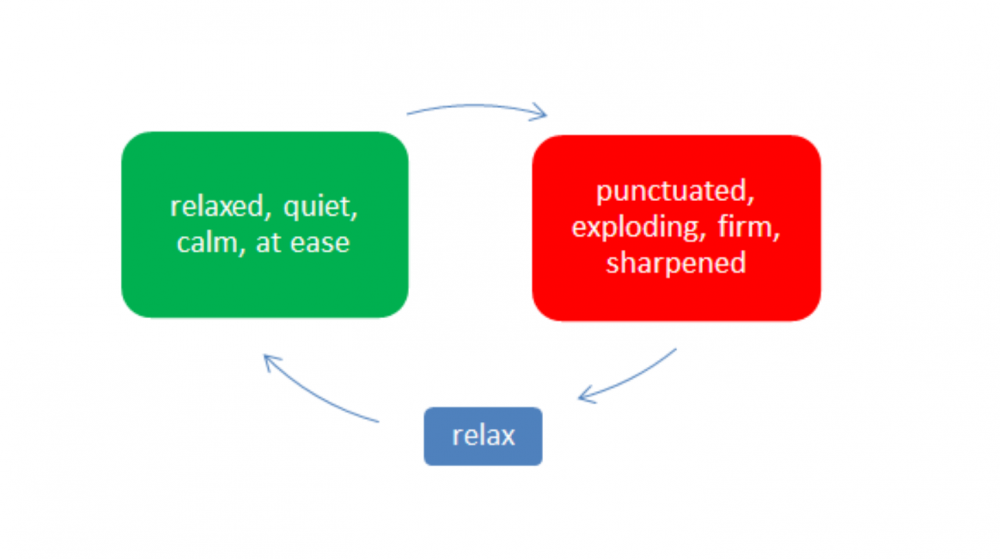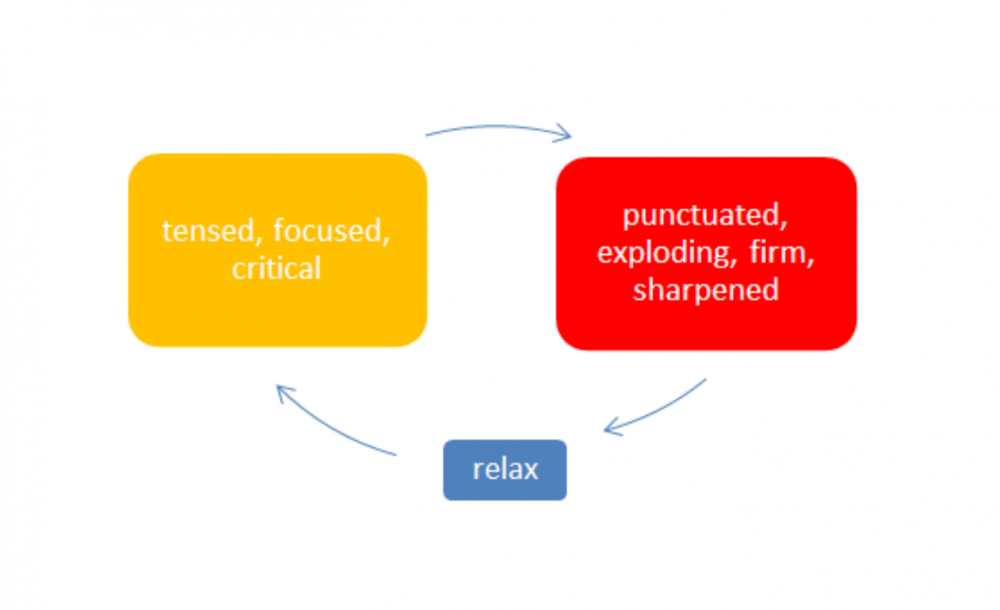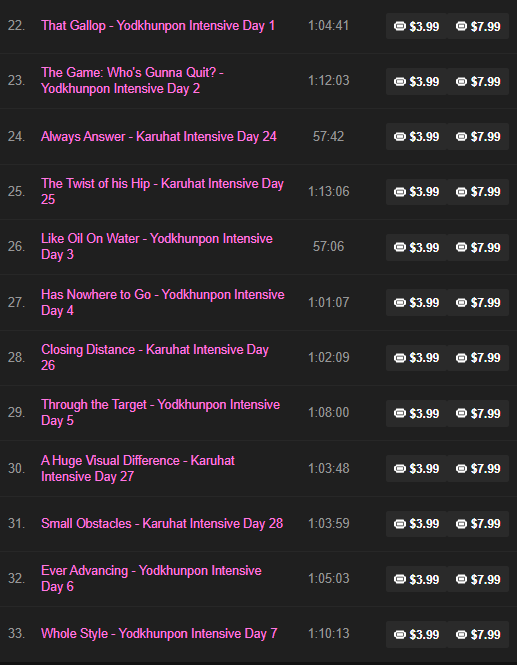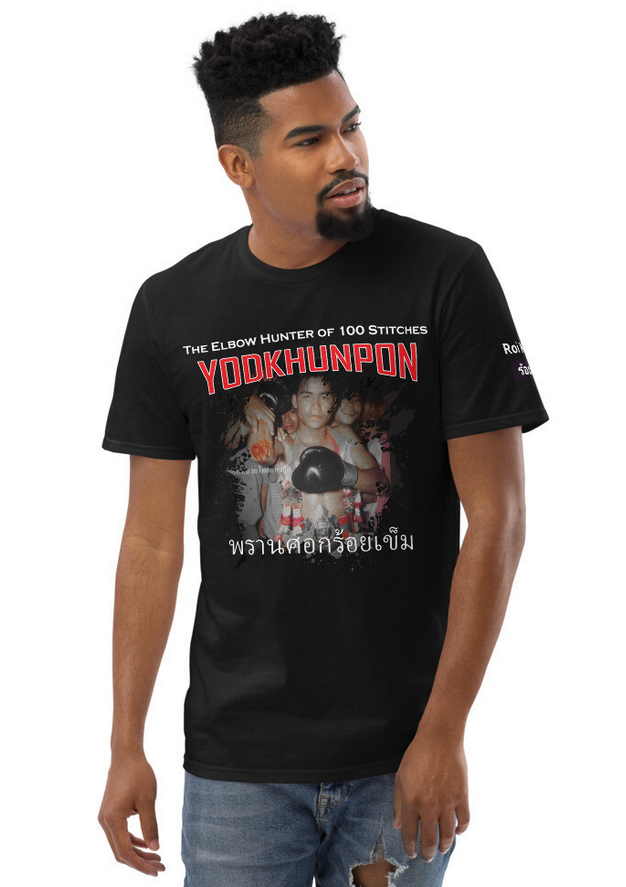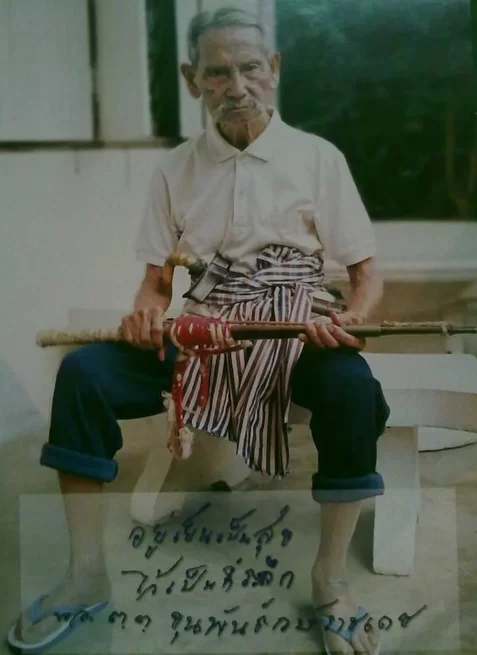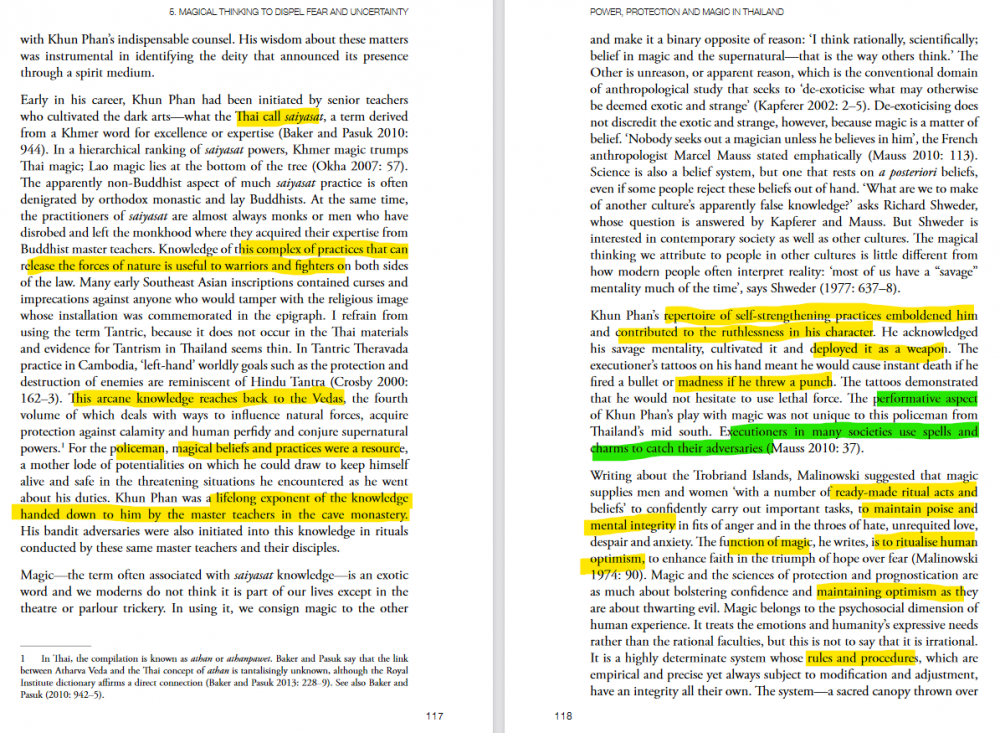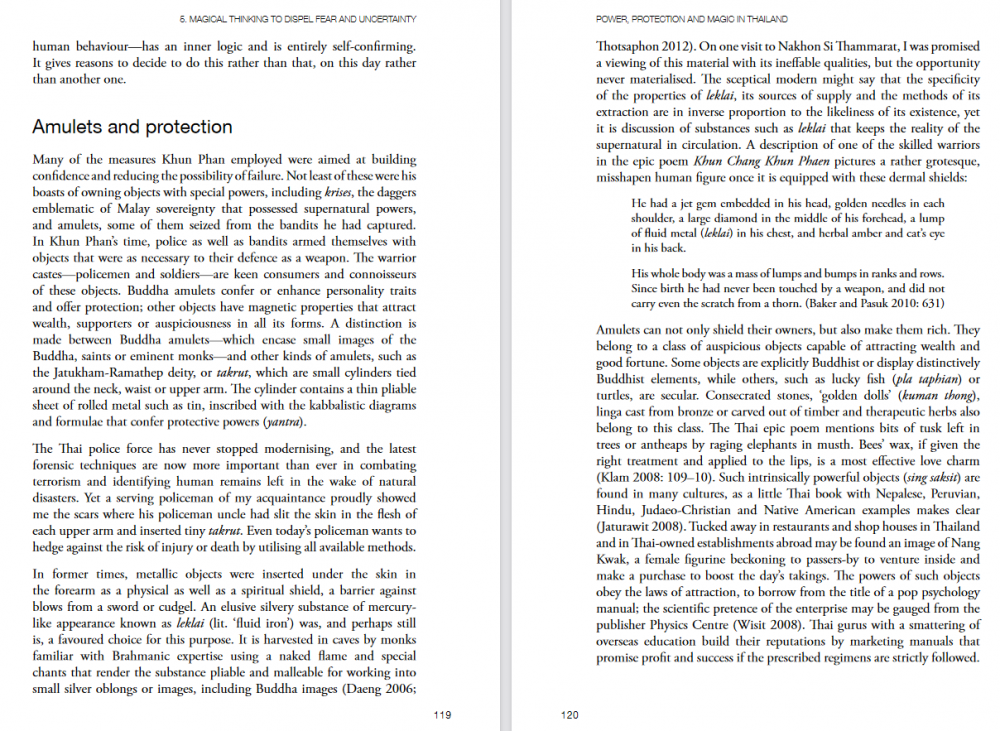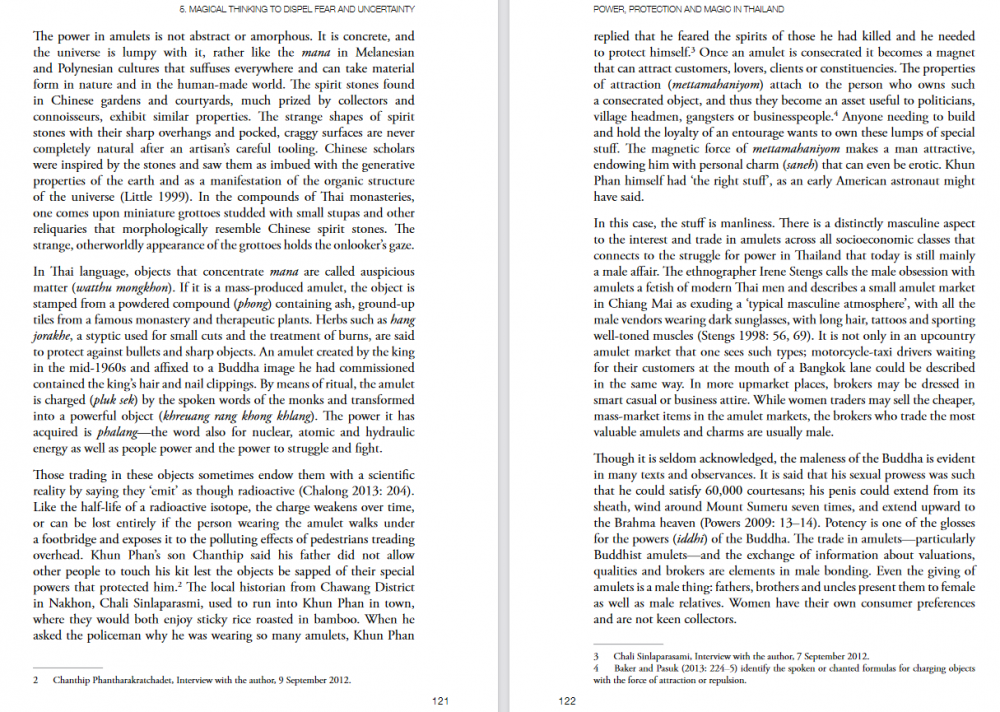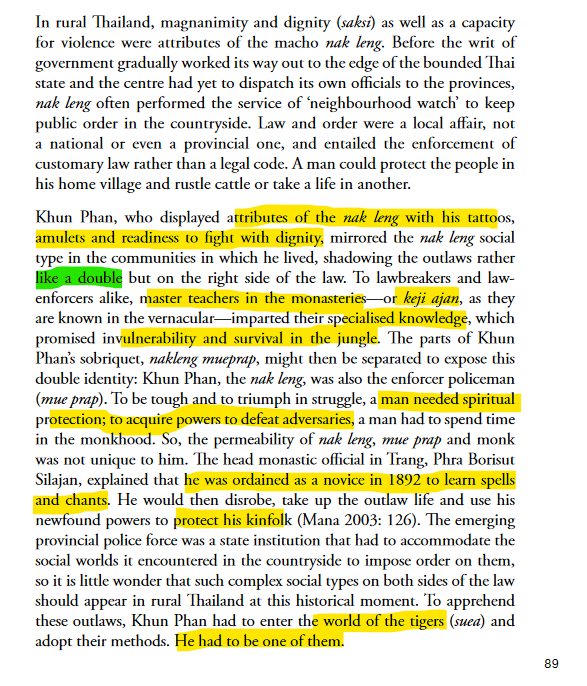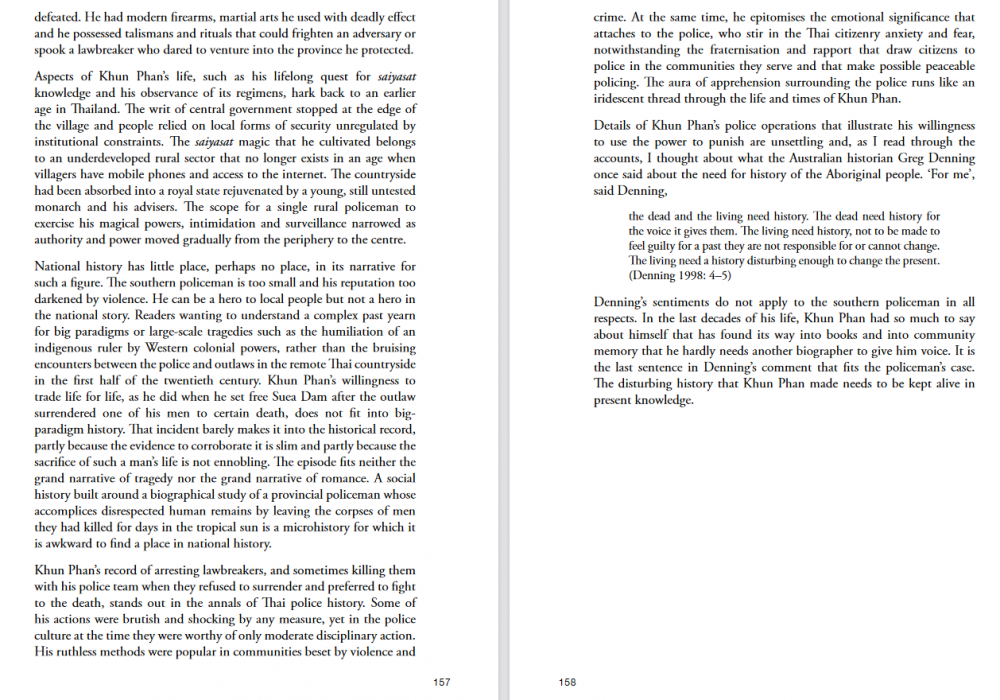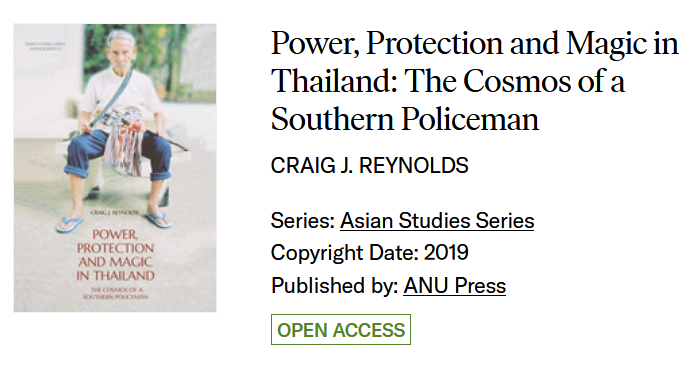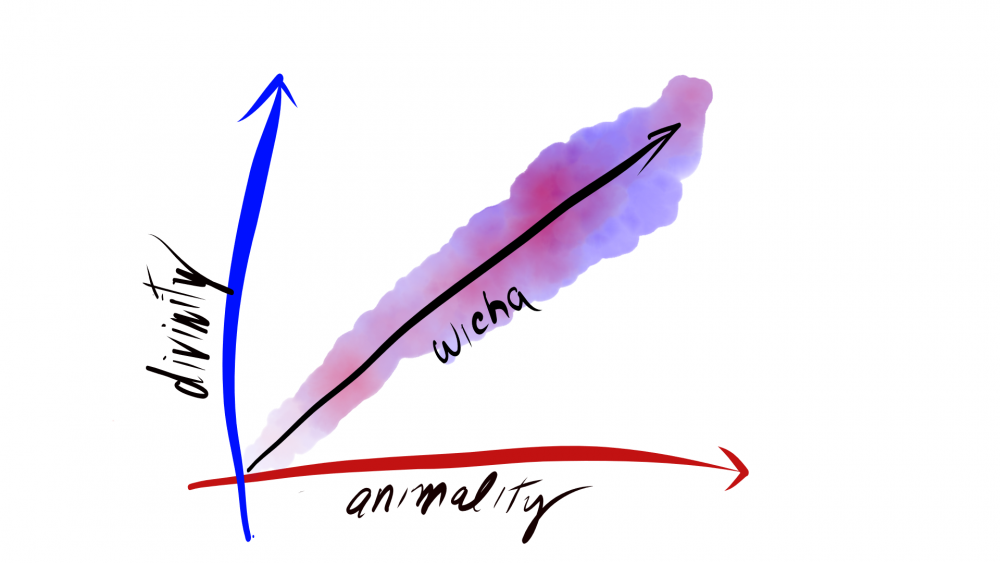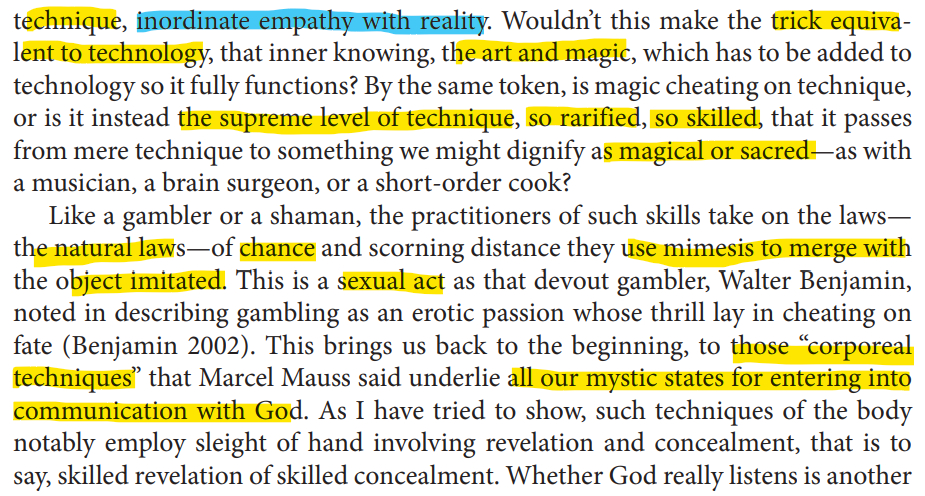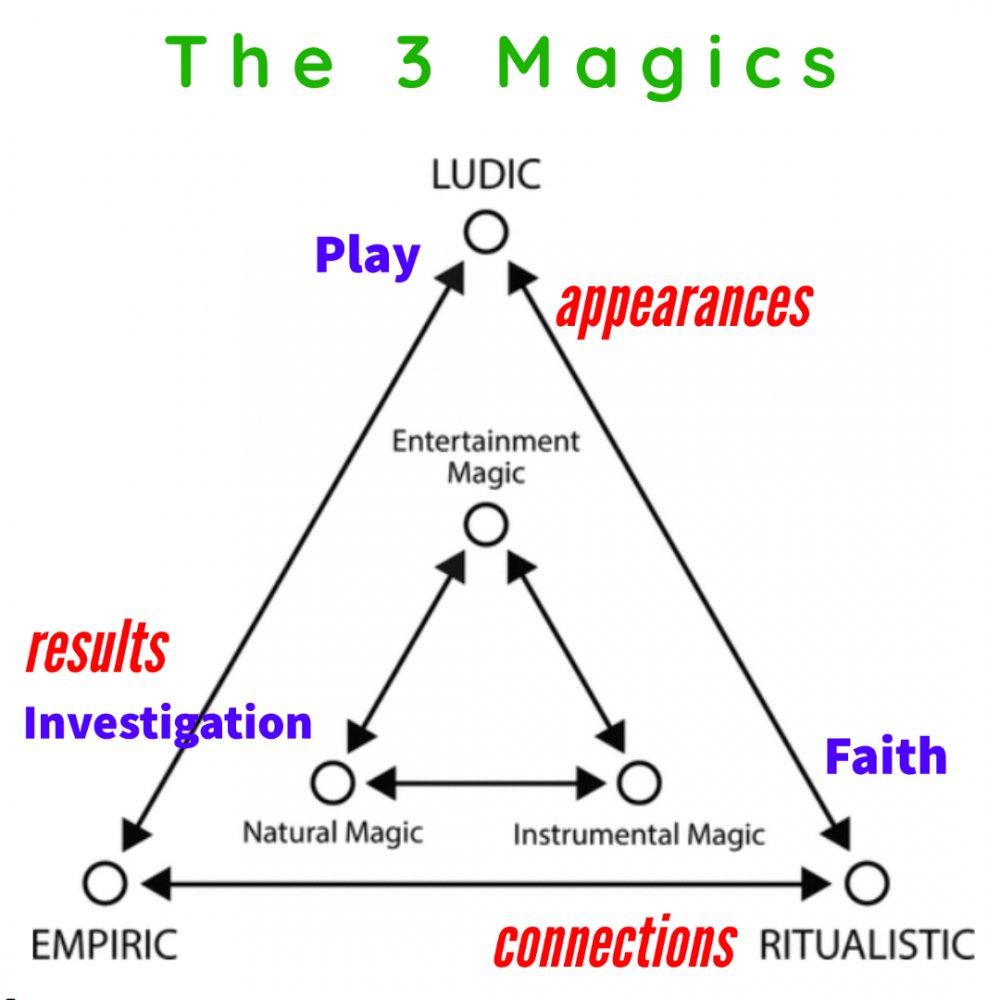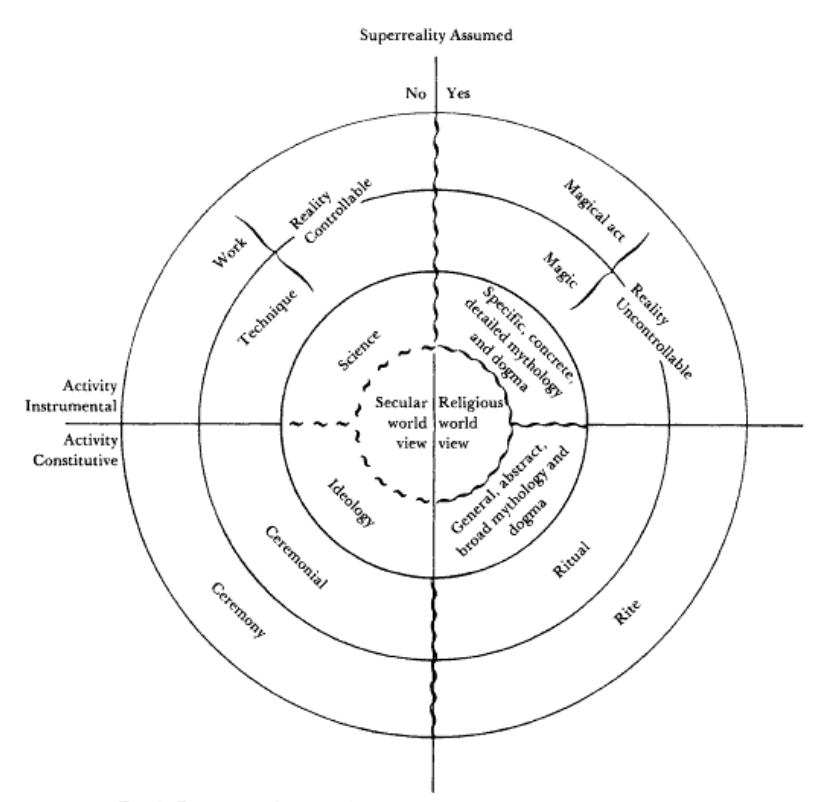-
Posts
2,264 -
Joined
-
Days Won
499
Everything posted by Kevin von Duuglas-Ittu
-
Thai language source This first time I've seen this issue publicly stated, Sylvie's paraphrase of the Thai news: "Sia Riam" the head of FA Group gym in Bangkok is quoted as being heartbroken by the pattern of international fighters coming to a gym and being welcomed with training, sleeping, eating as a group. They come with "no name" but after gaining some recognition or "fame" other gyms become interested and these fighters are swayed by promises elsewhere. He says he is sure other gyms have experienced this and asks for the Boxing Council to make a decision regarding the problem. (The issue being that Thai fighters are bound by contracts and a fighter changing gyms is a contracted sale, whereas non-Thai fighters have no legal contracts. His call maybe that gyms exercise more respect for another gym.) Opinion and Context This issue of farang gym loyalty in Thailand has been a long running one, wherein westerners seek to find traditional training experiences (and even traditional fight opportunities), but in the quest for authentic Thainess also find themselves outside of the structures of control which hold those traditional forms together. Thais largely are both legally contracted to the gym they train under, but also are often somewhat morally bound to the fatherly figures (or even motherly figures) in those gyms, which traditionally can be adoptive families. You'll recall, there was a very large Thai side dust up over this as Buakaw sought to extricate himself from his Por Pramuk contract which had been passed down from the gym's patriarch who died, to the owner's son. Buakaw was a world famous celebrity of fighting and did not feel still bound by his older, traditional contractual obligation, entered into when he was 9 years old. In the West this battle some years ago was largely portrayed as him breaking out of onerous workcamp ownership of Muay Thai, but in Thailand even though the contract he was under felt quite inequitable, some felt this public move was improper. He won his market freedom of movement. This was a rare, very public dispute. Unlike Thai fighters, Westerners on the other hand often found themselves in a hybrid, nebulous place. More traditional gyms that also were westerner-friendly like famous Sitmonchai or Sangtiennoi's gym gave a strong Thai family gym feel and experience, but westerners were not contractually bound to them. This contractless state is common throughout the country. Technically western fighters exist in a kind of psuedo-commercial arrangement, paying for training (and sometimes room and board), but also experiencing the closeness of family-style bonds that make Thailand's Muay Thai like no other Muay Thai in the world. This can become even more complicated if gyms extend "sponsorship" to a western fighter, providing room and board for exchange of fight percentage fees, and also an (unspoken) tightening of the sense of obligation, something a westerner may not fully feel because it isn't their culture. The western fighter may still remain mentally in the western idea of training wherein a "service" is being provided to them, which they pay for (either in monthly fees, or in terms of sponsorship with fight winnings), and in which they as the customer have ultimate choice and authority. For the Thai, they will see it shaded towards more traditional values and obligations. There is no ultimate "right" or even truth here, because each of these value systems are competing against each other, and are layered on each other somewhat simultaneously. But there is capacity for LOTS of miscommunication. One could romanticly attach oneself to the "traditional" model, but perhaps would also have to ignore the degree to which boys are contracted out at a very young age, often, becoming orphans in Muay Thai. There is harshness in the tradition. Or, one can see in the commercial arrangement where the customer is always right a highly impersonal, detached quid pro quo, the kind of which many come to Thailand to escape or be relieved from. Instead, in the past, westerners have found themselves often floating between the two, improvising respectful compromise and struggling through shared expectation. What seems to have changed at this point is I suspect the rise of Entertainment Muay Thai. Entertainment Muay Thai is a promotional style of Muay Thai that has become quite popular with tv audiences, and has given a shot in the arm to western-friendly gyms in Thailand. These televised fights had new rulesets that helped favor western fighters to win (forward aggression, shorter non-narrative rounds, reduced clinch, fought in a lower talent pool) and they drew a younger, more casual audience among Thais. Western friendly gyms suddenly had weekly televised promotions in which to showcase their fighters which not only grew the gym name, but also excited the fighters themselves. In the past a western fighter in a Thai gym largely would not be part of the serious business model of making stadium champions or sidebet stars. Instead they might compose a kind of side project, folding westerners into their Thai training. It varied between gyms just how integrated westerners would become, and some gyms would focus on them more than others, even promoting them, arranging belt fights with international organizations, etc., altering their business model to include more and more Muay Thai tourism. But, Entertainment Muay Thai seems to have done something interesting. It has raised the value of the western fighter, within the subculture itself. Gym names can become associated with Entertainment Muay Thai "stars" (promotions like ONE, Superchamp, Muay Hardcore, MAX), and with this rise in value is the absence of the traditional forms of control. The social bonds of fatherly or family control, or the legal bonds of contracts do not exist. What is really interesting about this FA Group statement is that both the shared family space of the gym, and the legal recourse of rules are referenced. It does not seem likely that this is in anyway to change right now, but as western fighters indeed do grow in value in the fight culture the lack of authority can produce conflicts and misunderstandings. It's also important to see that this issue is not just between a prospective fighter and their gym. It also, as its expressed, an issue between gyms themselves, the sense that other gyms can come in and poach the value in a western fighter that the prior gym has worked to build up. This is probably the even more serious issue. In the West we are much more used to thinking of things in terms of individual decisions and freedoms, and sometimes as difficulties between a person and an authority. But in Thailand its much more socially bound. Difficulties reflect power across the community in something of a triangle. This is because face is an important part of Thai culture. It's not just that a gym might lose a fighter of value (negative profit), its also the social consequences, the loss of status, that can happen when something appears to be taken from you. This is one aspect of how the contracting of fighters works. Contracts aren't just used to control the movements and opportunities of Thai fighters (they are of course, but they are more), they are also used to save face when fighters are leveraged to be moved, often beyond the control of the gym. The original gym gains compensation as a modicum of face. This is a pretty regular practice among smaller traditional Thai gyms that will find that their young star that they have built up locally, since a boy, is now being leveraged beyond their control by a powerful Bangkok gym. They have the contract, but perhaps the family of the boy sees much greater opportunity with the famous gym. The contract then gets sold, and a sign of face is given, even though the gym might not have an ultimate social say in the matter. This leveraging of built (youth) talent is what is being referenced here, but in the context of the built (adult) value of western fighters. If you want the latest in Muay Thai happenings sign up for our Muay Thai Bones Newsletter
-
see the Thai source here Sylvie paraphrases this announcement in Thai: Mr. Chai of GoSport announced that they will cancel all their Studio Saturday promotions (being produced in the Parking Structure next to Lumpinee Stadium), starting October 9th, 16th, and 23rd in order to spend that time rehearsing the "lights and sound" in the real Limpinee arena, ironing out some "timing issues" for a grand show on October 30th. He asks all fighters who had been scheduled to please keep training and be prepared for programs following from October 30th. No word whether the Giatpetch promotion, which precedes GoSport on Saturdays, will also be canceled or not. This is part of the evolving landscape of the New Lumpinee approach to Lumpinee Stadium, which involves intense commitment to producing promotions that have zero gambling influence, modernizing and Internationalizing its image, in this case the GoSport hybrid model of mixed cards with "Entertainment Muay Thai" type fights (3 round fights featuring farang vs Thai matchups) and also 5 round fights with a more traditional feel, coupled with the idea of an app that could give access to fights. GoSport which has been heading this movement had built a small green screen TV studio in the parking structure next to Lumpinee Stadium to be able to produce fights with the Lumpinee name under the Bangkok COVID prohibition of indoor events. Under this improvised solution they were able to put on the described "First Female Fight AT Lumpinee", making history. As the new promotion has been seeking its footing, overcoming a few early difficulties, this announcement anticipates that Thailand (and Bangkok) will be loosening up its restrictions at the end of the month. By shutting down their Saturday Studio shows which had featured their hybrid "modern" approach, they feel they can put on a more spectacular, tightly produced Grand Opening on October 30th, which will likely feature the first female fight IN the Lumpinee ring, the ring which historically had specific ritualistic prohibitions against anyone of the female gender entering its ropes, making history again. If you want the latest in Muay Thai happenings sign up for our Muay Thai Bones Newsletter
-
I hear you, but also understand that probably the most intense, most satisfying reading experience I ever had was as a child having found my mother's Critique of Pure Reason in the garage among so many dusty books - I was maybe 10 years old? - and trying to decipher that text painfully, without any context, as a 10 year old brain, sentence by sentence, almost word by word. I have no idea how far I got into it, but I was at it for months. I suspect I didn't learn very much about Kant's critique but it bestowed on me in the most powerful way a love for the hieroglyphics of Philosophy's over-specialized language, and led to to reading unending volumes throughout my young adulthood years up into my 30s and even 40s. That absolute incoherence, and my belief that special meaning was there, in those words gave me something that empowered my mind more than any cribnotes on Kant ever could. To this day it's a very special memory.
-
I was having a great conversation with Sylvie about the nature of Thailand's Muay Thai this morning, and why when you have the lead in the fight, traditionally, you begin to retreat and defend that lead, instead of marching forward and adding more pressure. You ostensibly "perform your lead" by taking defensive tactics, which to many parts of the world looks like the opposite of "fighting". In a comment on Reddit I was trying to explain this phenomena through how someone like Usain Bolt will ease up and coast into the last 15 meters, in a kind of dominance while everyone else is burning hard, because of a kind of excess, "I don't even have to punch it to beat you". This is a big part of the Muay Thai aesethetic. You can read that comment here: https://www.reddit.com/r/MuayThai/comments/pxtv2x/i_think_people_do_not_understand_how_thailands/hesx7fs/?utm_source=reddit&utm_medium=web2x&context=3 The reason for this is that Thailand's Muay Thai is about dominance, not aggression. Aggression can be a tool toward dominance, but it's only one tool in the tool box. A lot of this stems from the fact that Thailand's Muay Thai evolved to express a Buddhistic culture (and a reason why I'd argue that turning MT promotions into hyper-aggressive shows can contain a hidden cultural betrayal), but as you can see from the Usain Bolt analogy, in the West we can understand this kind of "ease into the tape" signature of superiority. Even in Western boxing we can admire the artful boxer who just toys with his opponent's aggression with an artful jab, evasiveness or movement (think Ali or Mayweather), its not all that far from parts of our own sports values. It's enough to say this led to a really interesting analogy Sylvie gave me regarding the much derided 5th round dance off in Thailand's Muay Thai. Let's say right off there are admittedly big problems with the 5th round dance off. It's safe to say that it is an aspect of Muay Thai that has become distorted and exaggerated, and not only produces unexciting ends to fights, its become the signature of big name gambling's powerful influence in the sport. This post is really about the underlying logic of the dance off, and besides its current flaws, what positive values it is expressing, helping explain how it is also viewed. Why do two fighters dance off the 5th round at times? Why does a fighter who is behind not keep trying, keep fighting?! When one fighter is signaling an insurmountable lead, why isn't the other fighter "heroically" relentless in pursuit? Chess Gives A Clue Sylvie's analogy comes from Chess. In Thailand's Muay Thai there is a definite "Gentleman's Sport" ethic that works to compliment it's absolute violence, so Chess is an interesting parallel. She said to me: In chess once you've gotten to the place in the game where you know by sheer logic you are going to lose you tip your own King over and resign. Masters will resign in positions that casual viewers might not even understand. There are a lot of pieces on the board! What a player is doing when they resign is showing their IQ for the game. If you continue fighting to win from unwinnable positions you can be signaling your inability to even see the board. Yes, your opponent may make an unexpected blunder. Yes, there might be buried in the position of some improbable ability to leverage a draw, but largely what is happening is that you are placing yourself ABOVE this particular game. If you struggled forward, not really realizing your fate, your would be signaling to your audience and your opponent you lack understanding. You can't see. This keys into deeper Thai cultural views that regard sheer aggression as low IQ and somewhat animalistic (non-human). You don't understand Chess. Now, there are all kinds of Chess players, and some of them may become famous for fighting out of bad positions and stealing draws. This isn't to describe what one should do, it's to explain the logic of why a losing fighter would choose to dance off. They acknowledge the board position, they are above this particular match/game. Thai fighters fight a LOT of fights. The tournament of a career is composed of many games. Now, once you get the logic you can also see where the problems are. If there are TOO many sprinters coasting into the tape. If there are TOO many fighters touching gloves in the 5th round, the "board" of the game is being influenced by something (or the match making is very poor). In these cases its explained that the chess board of the fight, the position that fighters are responding to, involves the heavy thumb of powerful gamblers. You touch gloves not only because of the "position" of how the fight was fought, but also understanding the powers that shape the fight as well. You can see that the lead in front of you is of a type that you would look stupid if you fought against it. You would look like you didn't understand the game and how it is won. How the 5th round is fought has changed over the decades, to be sure. It has stretched too far into a direction, but the logic of the danced round remains the same, that of the Chess match. Taking Ideology Into Context Too I also think that there are cultural elements that make this hard to read from a Western perspective. In the West we have a big celebration of the Little Guy. In the mythology of the West we have the story of the insignificant man who through "hard work" overcomes all odds against him. There is not only great romance over this ideological story, fighting itself has been an entertainment form that expresses this romance. We see this in the entire Rocky Balboa Working Man franchise. For us a lot of fighting is about this. I do think these stories resonate with Thai storytelling. Great fighters of the past who became champions out of rural provinces, fighters like Samson Isaan (who literally took the name of Isaan), do represent a kind of working class, provincial victory against all odds, but this is in the context of a much less socially mobile society, than say America. The much older cultural stories of Thailand are ones of hierarchy, and layered, group-bound peoples. Part of the "checkmate in waiting" acceptance is probably best understood in this wider lack of mobility, a lack of a more highly Individualistic Self-Destiny mythology (which contains its own social ills). In "seeing the mate" in advance you to some degree transcend your situation by demonstrating that you understand it, you see the position on the board from above, you have that IQ...but you are also trapped by it, you accept THIS loss, in the name of having perhaps a better chance to win the next time. This isn't to say that dancing off the 5th round is the right thing to do, in any particular fight, or even to say that the practice of the 5th round in today's Muay Thai doesn't need to substantively change, it does. But it's to explain the logic of it. Today's Muay Thai in Thailand is trying to take the big name Gambler's thumb off the scale, not an easy task because gambling itself is woven into the seriousness of matches, a fighter's identity, and the passion for Muay Thai itself. It's instead to try and explain the nature of some of the thinking that is beneath a 5th round performance. It is not just fighters taking a break "because they fight so much". It's locating yourself, positioning yourself socially in the game, a game you are ultimately trying to win. If interested in my thoughts on what I believe underlies Thailand's Muay Thai can see my article on the "6 Core Aspects" https://8limbsus.com/muay-thai-thailand/essence-muay-thai-6-core-aspects-makes
-
Well, I think that's the point. In this case it was the class, collectively, which resolved the German text. The point being, the immediate "dumb" that you feel when confronted with a language you simply do not know could be analogized to being locked in a clinch lock that feels "impossible to solve". Yes, it is at first blush impossible. You are dumb. But then you start building inches toward a solution...and when done in a group even more is possible. It's the communal construction of, and passing of knowledge. It's not one person "mastering" a technique (for themselves), or having special insight into the meaning of a text.
-
Wow, that is very good. Reminds me of this experience: I had a very interesting professor who taught Foucault, the notoriously difficult Philosopher with very specialized language. She started the class with a passage of an unrelated text in German (anticipating that nobody in the class understood German). She then had the class draw out meanings from the German, a language nobody understood. Collectively people offered the meanings of words or even sentences, exercising bits of pattern recognition through cognates and similarities between English and German. This was so interesting because the assumption someone has when presented with a language they don't know is to just shut down. I don't read German. this text is nonsense to me. But the class actually did a pretty good job of drawing out meaning from the German. It's exactly this response to willing to feeling dumb. You start at dumb, and then you realize that you aren't completely dumb. It was also a marvelous teaching progression. Foucault's very difficult terminology and very opaque text, when presented AFTER the German text was in comparison much more clear. The difficulties in (trans) English of Foucault no longer were paralyzing, making you feel dumb. It suddenly became a challenge. How much of this text can I figure out on my own?
-
Well, this is maybe the source of a fundamental misunderstanding of the more traditional approach. It is never just "an individual" learning stuff. The Thai Kaimuay is composed of social learning. Techniques are not re-invented by every single person, every single time. Instead they are passed down - but not through top-down (mechanical) instruction. They are learned by training against superiors (at times) from whom you mimic solutions. They are learned by imitating the more accomplished fighters, older, who are training next to you. The entire social group passes knowledge across its members, once you learn to watch and learn. It's not a guru of some kind "teaching" everyone the same mechanics, the same solutions. There is top down instruction at times, but it happens at a very young age, and it usually is composed of aesthetic guidance, posture, demeanor, etc, the framework through with solutions flow. The Thai Kaimuay though isn't really something westerners can expose themselves to at a young age. But yes, there is no guarantee that a single boy will figure it out. A Thai Kaimuay isn't making 30 champions out of its 30 boys. I suspect actually, that the powers of self-discovery, imitative solution making, self-motivation to persevere acts as a kind of filter on the 30 boys in the Kaimuay. Not only is it teaching the under-structure of the art, and developing elite skills...it is also weeding out boys without those possibilities.
-
Eventually figure it out, because it isn't endless. When Sylvie started clinching with the Thai boys she would face the particularly difficult lock of the gym owner's son (who was pretty young, but also very strong). She suffered under this lock for a very long time. We guess it was maybe about a year before she "solved" it. I don't think he particularly liked clinching with a female (or even clinch at all) so he would just lock her hard (w/ a great technical lock I think he learned from his uncle, who has since passed), and would kind of stagnate the clinch and wait out the time. She just had to suffer it. I'm sure once in a rare while someone would go to her and show her a counter, which she might try (and the boy would just counter lock the counter), she got a little bit of information, but it honestly was a full year before she solved the position. People might think that a lot of that year with the boy was wasted. It wasn't. She had to learn to relax in that lock. Nobody was telling her "Relax!" "Relax!" (which was the proper thing to do). She had to struggle against it. Fail. Get seriously frustrated. Dread it. Almost give up. Suffer it. There was no way "out" of the lock. It was a death sentence. It was what you call "endless". But, think about the things she did learn. She learned tons and tons of deeper principles of Thai clinch. The answer wasn't a mechanical solution to a mechanical position, though it could certainly have been taught that way. When he does THIS, do THAT. And now, try it again and again and again, until you get it. Yeah, you could do that. No, she learned the nature of Thai clinch at an emotional level, at what it took to take...and eventually figure, when someone is dominating your will in a position you do not understand. This was a huge lesson in technique, and in clinch development. It gave the tools not in how to solve THIS position, but how to solve ALL positions, and how to properly comport yourself in Thai Clinch in Thailand (which has very specific aesthetic demands, from a judging standpoint). The result is that she probably is the best female Muay Thai clinch fighter in the world, at this point. Not because she has some kind of "technical" encyclopedia of "answers" to "questions". I mean, she does have a pretty big technical understanding; but beneath this she has a much deeper understanding. She, over a year of frustration, developed great resources within herself. Emotional and mental resources, but also tons of micro-physical, technical ones. Slight ways of turning the body to just delay or retard the endless lock (because you know its coming). Even though the lock would get there, even delaying it, slipping it for a moment, was a victory. These micro movements play into all other kinds of solutions to other positions, because SHE invented them, improvised them out of necessity. Because the fighter invented them they become part of your style, your language. They are like the micro movements that a surfer makes on the board, it only comes from riding the waves, endlessly. She learned to start to deny primary positions which would then result in the lock, counterfighting the lock before it even comes to be. She learned to eventually micro-wiggle out space for herself, when locked. Or to score when locked. Or to minimize the visual impact of the lock. All of it born from frustration, and lots of "endless" toil, which might seem to not have any real purpose. She learned to solve a very difficult puzzle, importantly, a puzzle that was put on her to control her in a social space. The solution had to be gained on every level. Now, if she had only been in the gym for a month, and a Kru had seen the lock and walked over to her and told her the antidote. Hey, when he does that, do this! And she practiced it over and over. Maybe they even would use the boy to set up the position, so she could practice the solve...and THEN she went back to her gym in the West and face smushed the hell out of anyone in the gym who would try to lock her (much less skilled than this Thai boy), and even defeated any attempt to lock her in a few fights, this would be considered VICTORY! But these are very different things, very different levels of knowledge, and importantly, very different experiences of the art of clinch. Yes, you can say there are LOTS of reasons to gain Knowledge #2, to be used in lots of circumstances, but Knowledge #1 is - at least to me - where true value is. Not just because it's more effective, in the long run, but its because its more meaningful, its more complete, more connected to oneself.
-
I'm not really interested in whether someone is "cheating" in a sportmanship sense or not. When you "hack" a process you are changing the process. You are trying to extract the benefits of a process by other means. Very often "hacks" are perfectly necessary and warrented, especially when discussing developing "Thai" techniques, simply because the original processes of their development are not even available to you. Many of these processes are not even available to Thais today. But, if there is a "cheat" it would simply be representing the "products" of two different processes, as the same products. They are not. If a traditional recipe is to make a stew over 3 days of cooking, developing depths of flavors, textures and in the end meaningfulness in cuisine, but someone cleverly decides they can "hack" the recipe, and make the "same" stew in 30 minutes, by identifying the spices, this certainly is a possibility. But they are not the same stews. Attached to this, there might be very good commercial reasons to make this 30 minute stew for sale in a series of businesses (profit margin), and even to advertise this stew as the traditional one. Yep, you can do this. But, noting the two different stews also holds value. If the old process of stew making is lost, we also lose the stew itself. It will simply disappear. In the case of Muay Thai, the advanced level of artistry and the superiority over the fight space will no longer be reachable. Our biggest focus has been what is largely a misunderstanding of what even Thai technique is AND how it is developed (it's not developed THROUGH precision-hunting, though it expresses itself with precision, for instance). The reason for this misunderstanding is how it has been historically exported out of the country. Its important to keep track of these transformations. It doesn't mean it is wrong to learn in all kinds of other ways, or to "hack" the longterm processes for all kinds of other uses. What I'm really concerned with is only when the "hack" (a radical change in process) REPLACES the original process, and starts to represent it as authentic. The reason why this is a concern is that if it becomes replaced in the mind's eye of the public, efforts to preserve (and respect) the original recipe and keep it from vanishing will fall away. If someone's aim is to beat everyone in their weight class in a particular talent pool, or whip everyone in their gym, or protect themselves on the street, or mix some Muay Thai into MMA there are TONS of ways to learn skills and attempt to deploy them. I would not criticize any of those projects, under those aims. They just are not - in my opinion - in the tradition of the high art, and do not result in the quality that distinguishes the absolute beauty and effectiveness of the Thai tradition of fighting. But, this goes not just for the West. Thailand itself is losing its own connection to those processes. Thais themselves are becoming less effective fighters. The change in process is pervading.
-
This is a very helpful article on the subject, if you'd like to understand our perspective: The Slow Cook versus the Hack – Thailand Muay Thai Development https://8limbsus.com/blog/the-slow-cook-versus-the-hack-thailand-muay-thai-development And this article as well: Precision – A Basic Motivation Mistake in Some Western Training https://8limbsus.com/muay-thai-thailand/precision-a-basic-motivation-mistake-in-western-training with these graphics:
-
Because we've shot so much with Yodkhunpon it makes sense to put everything there is so far in a single place. This way you can browse through the documentation and if you are a superfan get more and more of this wonderful fighter. Biography The tales of The Elbow Hunter are a series of patron-supported short interviews we have done with Yodkhunpon talking about his life and career. You get to see the gentleness that lies beneath his violent elbow style: Sylvie telling a story of Yodkhunpon he told her: Slow Motion The Muay Thai Library Sessions with Yodkhunpon #9 Yodkhunpon "The Elbow Hunter" pt 1 - Slicing Elbow (37 min) watch it here Simultaneous Raja and Luminee title holder at 118 lbs, Yodkhunpon was one of the most feared elbow fighters in Thailand, and in this session he teaches the looseness and spacing that made his lead elbow such a viscious weapon. He also shuns the traditional rocking chair knee, and instead teaches a powerful stand-in crossing, open-hipped knee that compliments his elbows up top. #15 Yodkhunpon "The Elbow Hunter" part 2 - Escapes (48 min) watch it here Part 2 of my session with one of the most feared elbow fighters of the Golden Age, Yodkhunpon Sitraipom, The Elbow Hunter of 100 Stitches. Lots of fine details in this one, escapes from clinch locks, turns and catches. Best is his floating, gentle style that also holds such violence. #84 Yodkhunpon Special Intensive - The Whole Elbow Style (70 min) watch it here No other fighter in all of Thailand has developed so complete and pressuring a style based on the weapon of elbows. In this session the Elbow Hunter of 100 Stitches presents his whole galloping style, revealing how he opens up windows for his elbows, and uses those windows to then open up attack with other weapons. #104 Yodkhunpon Sittraipum - The Art of Shadowboxing (64 min) watch it here Some have said this is one of the favorite sessions in all the Library. It's very rare to get detailed instruction and advice on How to Shadowboxing, let alone from a great fighter fo the past. This is a FULL hour of how to shadowbox, learn with me as I learn from The Elbow Hunter of 100 Stitches Yodkhunpon, the greatest Elbow Fighter in Thai history. Bonus Session 9: Yodkhupon Sittraipum - Lethal Smoothness (73 min) watch it here In this session Yodkhunpon really delves down into the smoothness of his style, with great emphasis on his galloping footwork towards the end. It's all about building a pressure style that does not strain, but rather exerts a constant music of forward attack. Yodkhunpon on The Art of Shadowboxing #104 Yodkhunpon Sittraipum - The Art of Shadowboxing (64 min) watch it here Some have said this is one of the favorite sessions in all the Library. It's very rare to get detailed instruction and advice on How to Shadowboxing, let alone from a great fighter fo the past. This is a FULL hour of how to shadowbox, learn with me as I learn from The Elbow Hunter of 100 Stitches Yodkhunpon, the greatest Elbow Fighter in Thai history. Yodkhunpon Techniques Knees Footwork Hitting Guard A Free 30 Minute Training Session w/ Commentary - Him Teaching His Style Watch With Me Fights of Yodkhunpon Sylvie and I have done watch with me edits of fights of the Golden Age, these are the fights of Yodkhunpon we covered: His Championship Fights: A Footwork Edit: A Yodkhunpon Fights YouTube Playlist Modern Martial Artist's Breakdown of Yodkhunpon's Style The Muay Thai Library Sessions with Yodkhunpon #9 Yodkhunpon "The Elbow Hunter" pt 1 - Slicing Elbow (37 min) watch it here Simultaneous Raja and Luminee title holder at 118 lbs, Yodkhunpon was one of the most feared elbow fighters in Thailand, and in this session he teaches the looseness and spacing that made his lead elbow such a viscious weapon. He also shuns the traditional rocking chair knee, and instead teaches a powerful stand-in crossing, open-hipped knee that compliments his elbows up top. #15 Yodkhunpon "The Elbow Hunter" part 2 - Escapes (48 min) watch it here Part 2 of my session with one of the most feared elbow fighters of the Golden Age, Yodkhunpon Sitraipom, The Elbow Hunter of 100 Stitches. Lots of fine details in this one, escapes from clinch locks, turns and catches. Best is his floating, gentle style that also holds such violence. #84 Yodkhunpon Special Intensive - The Whole Elbow Style (70 min) watch it here No other fighter in all of Thailand has developed so complete and pressuring a style based on the weapon of elbows. In this session the Elbow Hunter of 100 Stitches presents his whole galloping style, revealing how he opens up windows for his elbows, and uses those windows to then open up attack with other weapons. #104 Yodkhunpon Sittraipum - The Art of Shadowboxing (64 min) watch it here Some have said this is one of the favorite sessions in all the Library. It's very rare to get detailed instruction and advice on How to Shadowboxing, let alone from a great fighter fo the past. This is a FULL hour of how to shadowbox, learn with me as I learn from The Elbow Hunter of 100 Stitches Yodkhunpon, the greatest Elbow Fighter in Thai history. Bonus Session 9: Yodkhupon Sittraipum - Lethal Smoothness (73 min) watch it here In this session Yodkhunpon really delves down into the smoothness of his style, with great emphasis on his galloping footwork towards the end. It's all about building a pressure style that does not strain, but rather exerts a constant music of forward attack. Aside from the Library if you really want to dive deep you can also rent or buy or subscribe to the Sylvie Intensive Series which includes 7 days of learning from Yodkhunpon, over 7 hours. All the earned profits from tht series go to Karuhat and Yodkhunpon: browse that series here If you'd like to help support Yodkhunpon you can also get a shirt we've designed for him showing his bloody elbow wearing his Lumpinee Belt, 100% of the earned profits go to him! get that shirt here
-
As with any pattern making, if you become predictable vulnerabilities arise. So look into switching things up. A big one to add is Yodkhunpon's galloping footwork. Here's a public video there is more in the Library: This footwork allows you to cross distance quickly, as with any closing pressure speed is an important factor. You can mix up the march with the gallop. Also, the hop in can also break patterns. Sylvie has that here: And lastly, a really good tool, seriously under-utilized by closing fighters is the teep. If you can mix teeps in in you advance it goes a long way to preventing your opponent from just timing you, and hiding your own rhythm. Mixing in the high-knee march, the hop in, the gallop and the hop in gives you a bunch of different looks. It's just up to you to make your own recipe. And, of course, once again, the speed of your advance is a big deal. Something that might get you swept at half speed might be untouchable at full speed.
-
A Case History This is just an addendum case history for those who are interested in the role of magic in the argument's flow. It provides historical context to the notion of magical combat in Thailand, of which there is little. We do have the Burmese description from the Nai khanomtom verses, which attested that his victories were due to the beguiling nature of his Ram Muay, but aside from this the joining of martial and magical combat has very little written historical record in English (the Thai epic poem Khun Chang Khun Phaen, aside). Here is an essay on a southern Thai policeman, Khun Phantharakratchadet (1898–2006), who lived at a time of Siam's transition between local powers to Royal Nationalism, and embodied a masculinity that likely had very deep roots in Thailand's fighting culture. Rural male leadership, religion and the environment in Thailand's mid-south, 1920s–1960s Craig J. Reynolds Rural_Male_Leadership_Religion_and_the_E(1).pdf This essay provides a great overview of the man who would become the most famous policeman in Thai history. Because Muay Thai is a performance of hypermasculinity studying the historical masculinity of Khun Phan for me gives deep (but perhaps narrow) insight into the prowess that is being expressed in traditional Muay Thai settings. He is a man from time past (read more on Muay Thai and Thai masculinity here). But for our essay series, it's in particular the way in which Khun Pan studied and armed himself, magically, as a policeman, walking the legal line between officer and Nakleng, that helps fill out the gaps between "fighting techniques" and "magical techniques". For that another work by Craig Reynolds on Khun Pan is best cited. Below are relevant passages: AND AND... REYNOLDS, CRAIG J. Power, Protection and Magic in Thailand: The Cosmos of a Southern Policeman. ANU Press, 2019. JSTOR source The historical story of Khun Phan not only keyholes us back into vivid history, exploring the roots of Thai hypermasculinity, it also ties together the conceptual marriage of magical and technical knowledge in fighting. It teleports us into the values and concepts that likely structured rural Muay Thai, festival combat. As we seek the sacredness of Muay Thai combat, Khun Phan orients us toward principles that light the way. If you want to be entertained on the myth of Khun Phan, this film and its sequel dramatize in a Thai heroic fashion the magical and masculine qualities of the figure.
-
Short Essay 3 Every Muay Thai fight fought in Thailand begins with an incantation. As much as the West, or even modernizing Thais might want to prevaricate over just what the Wai Kru and Ram Muay is (is it religious? is it just respect and tradition? is it animism?), antecedently, and one might say essentially, this is magic. It is actually magical combat. The battle has already begun, on the magical plane...if you hold the required beliefs and practices. You are not just thanking your teachers, I would argue, you are actively connecting to them. You are drawing into the ring the powers of the ones and things which created you, as a fighter. You are powering up, loading the chamber, in the Wai Kru. In the Ram Muay, even though you may not be aware of the full meanings of the figures you are impersonating, or the gestures you are repeating, these are magical in nature. To say that they are magical is not just to say that they represent supernatural powers, they are also the enacted devices to connect to those powers, those forces. And in this regard, they are wicha. In many respects the Thai concept of wicha is close to the Anglo suffix -ology. It denotes a field of study, a knowledge. You find it in the name of the fighter Yodwicha, supreme knowledge. But the Southeast Asian concept of knowledge, in these contexts, isn't so much a thing of dusty books, or theorems. It is, in a sense, much more grounded in a more physical way. It is embodied, often. It pervades the body of the knower, and it connects to real world forces. It composes a technique, a series of techniques that bridge the individual to the world, and back. What you are seeing in the Ram Muay (and the Wai Kru) is a wicha. Much of the intentional (magical) nature of these techniques, wicha, have eroded with the changes in culture, but it is still important for the understanding of the meaning of Muay Thai in traditional settings to appreciate that what is happening before the fight is a wicha, just as the techniques displayed in the fight are also a wicha. When you take hold of what a wicha is in this contex, you can see how it draws a line between the two axes of Muay Thai performance, it brings together the reality of animality, and the esoteric art of divinity. It keeps animality from becoming blind and unguided, and it keeps divinity from becoming to ethereal, too unattached, too evaporated. It is the shoreline between animality and divinity, hopefully captured by the arrow in my illustration above. There is a wonderful moment in an as-yet-unpublished interview we did with Krongsak, one of the great fighters of the late 1980s. We asked him "Who would win between Samart and Somrak?" (these two fighters are two of the most femeu, artful fighters of Muay Thai history, but of different generations). Krongsak smiled. "What promoter would put on such a fight?...Who would pay to go to sleep?" It makes me laugh every time I think of this answer. It brings out the reality that the great eras of Muay Thai were actually constructed through the matchups they made, pitting contrasting styles against each other, but it also brings out one of the great problems with the femeu axis of Muay Thai. As stylish fighters like Samart or Somrak perform these absolutely brilliant ho-hum, too-cool-for-school victories, the femeu style itself ever threatens to be too far above the fight, too detached, too unreal. For Krongsak putting these too matadors in the ring together would be the most boring thing in the world - noting that Krongsak is telling a playful joke here, though a joke with reality to it. It is enough to say that if there are indeed Girardian sacrificial dynamics operating in traditional Muay Thai, there is a certain sense in which the sacrifice has to be real. It requires an animality balast to the rite, for it to have its psycho-social effect of purging the unlocalized violence in a community. This animality can come in the presence of a "bull", let's say in the classic "Muay Khao vs Muay Femeu" matchups, or perhaps more evocatively, it can be present in the wicha of a particular fighter, their unique marriage of art and violence, in their technique and their style, fighters like Wangchannoi, Wichannoi, Namkabuan perhaps, that combined both art and violence in a single form. In any case, what is important here is that the ring is a place of grounded art. It begins with magical, ritualized combat, and conducts itself with the techniques of power and art, as they have been taught by local knowledge. This is something I'll return to later, the way in which the wicha that is expressed come out of local wisdoms. The wichas are reflections of particular lineages, families, communities and regions. Wichas of technique not only ground divinity, but they also historicize it, and personalize it. This historicization is really important because it plays into the performative meaning of the display of wichas, especially when on the stage of the fighting ring. Just what is Magic? I believe, to understand wicha one is only aided by understanding what magic is. To this aim it's instructive to follow up where anthropology has been. Anthropology has long had this problem: How to study other cultures and their beliefs without imposing bias, especially the bias that one's own culture is superior. With magical practices and beliefs it was quite difficult to avoid the instinctive conclusion that magic was just underdeveloped, primitive "Science". It was just "wrong" Science that didn't get how the world worked, but nonetheless attempted to control and harness it. To this aim Anthropology, in examining otherwise exotic and primitive cultures attempted to work out the differences between magic and belief, or at the very least to see how they may be different. If its not too far afield, I want to quote this graphic from the essay Science & Religion, Magic & Technique, from "Malinowski's Magic: The Riddle of the Empty Cell" (1976). It outlines the ways in which rite, ceremony, magic and technique intersect: My reason for including the above is in a certain respect a way of complexifying just what we think we see when we look at the fighting arts (the wichas) of Thailand, and the rituals of the Wai Kru and Ram Muay. In a certain respect, both the fighting arts and the magical arts are ways in which the individual, and the community, deal with and give meaning to unknowable circumstances. Wichas, traditionally, draw on all four quadrants of the above, and when they do so they historicize the agent in a lineage of knowers. Referring to the diagram I started with short essay with, they bind together the animality of reality, and the rarity of the divine, and most importantly, they do this in the context of performed battle. It is a battle of wichas. I'm not going to go too much further into this - there is a great deal to be discussed under the Anthropology of magic - a great entry on Magic and Anthropology is found here - it is enough to simply understand that traditional Muay Thai, its performance, is a battle of wichas (composed of techniques) and that these wichas work to weave together the two axes of animality and divinity, contesting that new reality in a ritualistic, socially defined entertainment space, a space ultimately I hope to inform and define within Girard's sacrificial dynamics. (Don't worry we'll get there!) I want to end this portion of my series with the thoughts on magic from the book Magic’s Reason An Anthropology of Analogy by Graham M. Jones. Jones is particularly interested in the magic of illusion, slight of hand, often in the western sense of magical entertainment. In this passage though he talks about the deeper meanings behind the techniques and display. For him the veritable skill of the magician performs something transcendent: And added to this I'd like to end with a modified graphic of 3 different kinds, or ends of magic, knowing that we can also apply these same categories and purposes to the technical displays of fighters in the traditional ring.
-
Two more thoughts on this, because it's a complicated issue. 1. Why not show your coach the Yodkhunpon shadowboxing session so he knows what page you are on. It could be that you are doing it earnestly, but maybe missing elements of what could be found in the video. It helps to have an educated eye looking on. If you want to gift him a month of Library access for free, we can do that. Just have him sign up and we'll send a refund for that month. 2. In a very different direction, we have a philosophy of gyms and training opportunities what is the logic of the Cupcake Bakery. If a bakery is really great at making cupcakes, and everything that comes out of it is cupcakes...and you don't want to be a cupcake, you want to be something different, it doesn't mean that you can't "go" to that bakery. It just means that you have to look at what the process (the gym, the coach) produces, and know that at a certain point you have to break off, or include other processes...or, you'll become a cupcake. For someone like Sylvie there just is no gym, trainer, promotion, NOTHING that will produce what she wants to become. None. So it is all cupcake bakeries, croissant factories, ice cream cake showrooms, it's all processes that make things other than what she wants to be. So, it takes a careful combination of processes - processes that make other things - to (possibly) create something new, the thing she wants to be. It means, unfortunately, ALL the processes are "wrong" in some way. But taking elements from many of them, changing those processes over time, could combine some of their strengths into a virgin ground territory. It also takes great patience and perspective for any particular process. It just isn't going to be baby bear. All are going to be mis-fitting.
-
This is not true, at least for Thailand's Muay Thai. You can hit the back of the head in Thailand's Muay Thai. It isn't done a lot, because it can be read as unsportsmanlike, or dirty boxing, but it's legal. It's one reason why there is a very big "don't turn your back on the action" priority in Thailand. You MUST protect yourself. You'll also see refs run in and break positions where the back is exposed, just as a matter of protection.
-
I think from your description, no matter the facts or possible agreements, you FEEL like there isn't support, and isn't a path there. This is really, really important. So many fighters just stay locked into training environments and relationships that just are not good for them, emotionally, spiritually, when they themselves feel deeply about their art, their progress. I say, when in doubt, when your instincts tell you that things are not right, move. A move tells YOU that your passion is right - even if you are making mistakes along the way. Gyms, by their nature, can be very closed-minded spaces. With the Library you are being exposed to a huge Universe of striking wisdom and techniques, much of it lost or on the way to being lost. It is going to cause some friction. What we try to do to alleviate these problems is to expand training beyond a single gym. Train in multiple spaces, under different people, so it isn't always you vs the coach. But, if it gets to the point where you feel that the coach is protecting "his way" so hardcore and does not fundamentally have your growth at heart, just move. This is a feeling. It's important to own those feelings.
Footer title
This content can be configured within your theme settings in your ACP. You can add any HTML including images, paragraphs and lists.
Footer title
This content can be configured within your theme settings in your ACP. You can add any HTML including images, paragraphs and lists.
Footer title
This content can be configured within your theme settings in your ACP. You can add any HTML including images, paragraphs and lists.
